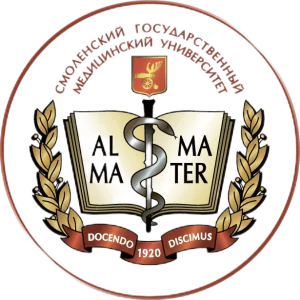,
volume 17
,
issue 9
,
pages 1579-1588
Design and validation of a phantom for transcranial ultrasonography
Publication type: Journal Article
Publication date: 2022-04-10
scimago Q2
wos Q2
SJR: 0.658
CiteScore: 5.4
Impact factor: 2.3
ISSN: 18616410, 18616429
PubMed ID:
35397712
Computer Science Applications
General Medicine
Computer Graphics and Computer-Aided Design
Biomedical Engineering
Surgery
Computer Vision and Pattern Recognition
Health Informatics
Radiology, Nuclear Medicine and imaging
Abstract
Commercial medical ultrasound phantoms are highly specific as they simulate particular clinical scenarios. This makes them expensive to use in multi-target research and training. General approaches to human tissue and organ modeling are described in the manufacturing methodology, access to which is restricted by the manufacturer's trade secret. Our aim is to propose a reproducible methodology to design a head phantom for transcranial ultrasound training and research from widely available materials and to validate its applicability. To create an anthropomorphic phantom, we used data from real patients obtained by CT and MRI scans. We combined FDM and LCD 3D printing to achieve the desired acoustic performance and ergonomics of the phantom. We fabricated the phantom using polyvinyl chloride plastisol, photopolymer, and PLA to simulate brain tissue, temporal acoustic windows, and acoustically opaque parts of the skull, respectively. Notably, the phantom fabrication method uses only readily available materials and is easy to reproduce. We developed a basic one and anatomical one versions of the head phantom. The basic version contains a simplified brain: tissue-mimicking material is poured into the skull with needles inserted, which specific pattern is easy to recognize in B-mode images. The anatomical version has an anatomically correct brain dummy extracted from MRI data and contains multiple randomly distributed small metal, plastic, and bony objects ranging in size from 1 to 3 mm each. The proposed methodology allows producing head phantoms for transcranial ultrasound training and research. The anatomical accuracy of the model is proved by ultrasonography and CT studies. Both versions of the phantom comprise the skull and the brain and are intended for ultrasound imaging through the temporal bone acoustic window. Needles and small objects serve as navigation targets during the training procedure. The basic version helps learning basic navigation skills, while the anatomical one provides a realistic setting to perform the diagnostic procedure.
Found
Nothing found, try to update filter.
Found
Nothing found, try to update filter.
Top-30
Journals
|
1
2
3
4
|
|
|
Bio-Medical Engineering
4 publications, 16.67%
|
|
|
International journal of computer assisted radiology and surgery
2 publications, 8.33%
|
|
|
Digital Diagnostics
2 publications, 8.33%
|
|
|
Physical and Engineering Sciences in Medicine
2 publications, 8.33%
|
|
|
International Journal of Biological Macromolecules
1 publication, 4.17%
|
|
|
Journal of Materials Science
1 publication, 4.17%
|
|
|
Medical Physics
1 publication, 4.17%
|
|
|
Bioengineering
1 publication, 4.17%
|
|
|
Journal of Mechanical Science and Technology
1 publication, 4.17%
|
|
|
Journal of Materials Science: Materials in Medicine
1 publication, 4.17%
|
|
|
IEEE Access
1 publication, 4.17%
|
|
|
Medical Image Analysis
1 publication, 4.17%
|
|
|
Physics in Medicine and Biology
1 publication, 4.17%
|
|
|
1
2
3
4
|
Publishers
|
2
4
6
8
10
12
|
|
|
Springer Nature
11 publications, 45.83%
|
|
|
Institute of Electrical and Electronics Engineers (IEEE)
6 publications, 25%
|
|
|
Eco-Vector LLC
2 publications, 8.33%
|
|
|
Elsevier
2 publications, 8.33%
|
|
|
Wiley
1 publication, 4.17%
|
|
|
MDPI
1 publication, 4.17%
|
|
|
IOP Publishing
1 publication, 4.17%
|
|
|
2
4
6
8
10
12
|
- We do not take into account publications without a DOI.
- Statistics recalculated weekly.
Are you a researcher?
Create a profile to get free access to personal recommendations for colleagues and new articles.
Metrics
24
Total citations:
24
Citations from 2025:
7
(29.17%)
Cite this
GOST |
RIS |
BibTex |
MLA
Cite this
GOST
Copy
Leonov D. et al. Design and validation of a phantom for transcranial ultrasonography // International journal of computer assisted radiology and surgery. 2022. Vol. 17. No. 9. pp. 1579-1588.
GOST all authors (up to 50)
Copy
Leonov D., Kodenko M., Leichenco D., Nasibullina A., Kulberg N. Design and validation of a phantom for transcranial ultrasonography // International journal of computer assisted radiology and surgery. 2022. Vol. 17. No. 9. pp. 1579-1588.
Cite this
RIS
Copy
TY - JOUR
DO - 10.1007/s11548-022-02614-2
UR - https://doi.org/10.1007/s11548-022-02614-2
TI - Design and validation of a phantom for transcranial ultrasonography
T2 - International journal of computer assisted radiology and surgery
AU - Leonov, Denis
AU - Kodenko, Maria
AU - Leichenco, Daria
AU - Nasibullina, Anastasia
AU - Kulberg, Nicholas
PY - 2022
DA - 2022/04/10
PB - Springer Nature
SP - 1579-1588
IS - 9
VL - 17
PMID - 35397712
SN - 1861-6410
SN - 1861-6429
ER -
Cite this
BibTex (up to 50 authors)
Copy
@article{2022_Leonov,
author = {Denis Leonov and Maria Kodenko and Daria Leichenco and Anastasia Nasibullina and Nicholas Kulberg},
title = {Design and validation of a phantom for transcranial ultrasonography},
journal = {International journal of computer assisted radiology and surgery},
year = {2022},
volume = {17},
publisher = {Springer Nature},
month = {apr},
url = {https://doi.org/10.1007/s11548-022-02614-2},
number = {9},
pages = {1579--1588},
doi = {10.1007/s11548-022-02614-2}
}
Cite this
MLA
Copy
Leonov, Denis, et al. “Design and validation of a phantom for transcranial ultrasonography.” International journal of computer assisted radiology and surgery, vol. 17, no. 9, Apr. 2022, pp. 1579-1588. https://doi.org/10.1007/s11548-022-02614-2.










